With time raccoons have evolved. Now, instead of living in the wild, they prefer living in urban areas because they have access to more food and shelter. The growing population in cities is alarming as they will do anything to get inside their homes. So, the question that arises here is; do raccoons eat wood?
No. Raccoons do not eat wood. They are gnawing animals and can chew through wood to get inside homes. It is common for raccoons to invade houses to find food and shelter. They will destroy the house exterior and yard by chewing through various structures or materials.
To find more details on raccoon gnawing habits, read the article carefully.
Do Racoons Chew On Wood?
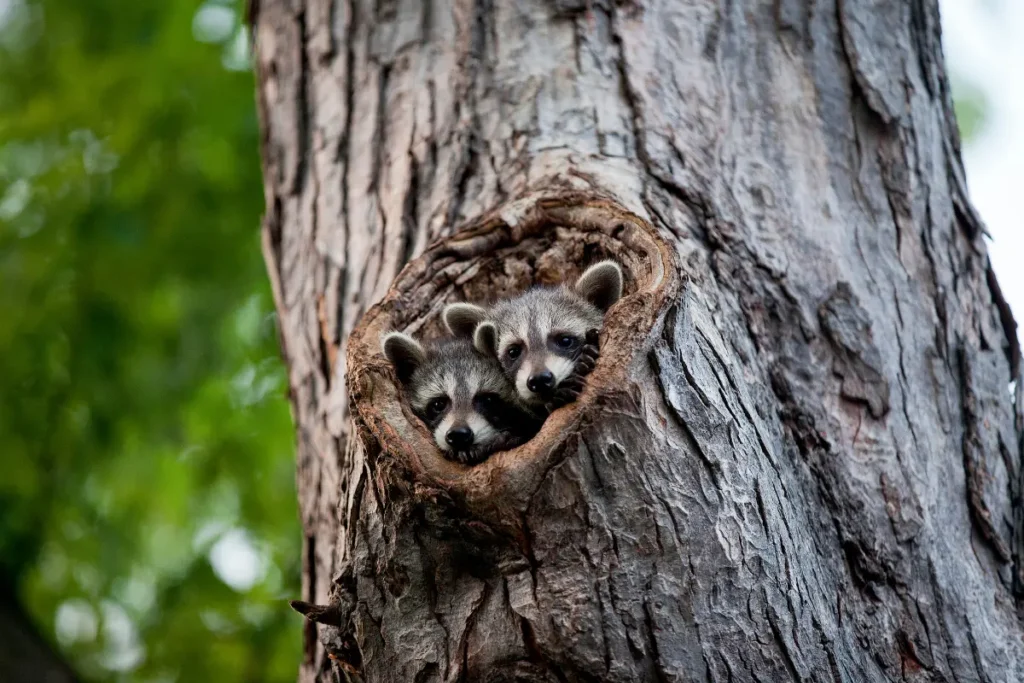
Raccoons have adapted to live with humans and know ways to climb, jump, hide and gnaw on materials. The five-digit paws and sharp teethes are bonus along with the clever mind. They are destructive, and it is common for them to damage things and properties.
Raccoons can chew on wood and many other materials, including metals. It is common for raccoons to break into homes. The buildings made of wood are an easy target. They will probably make holes in it to gain access inside.
The usual hiding places of raccoons are attics or roofs. When you notice bitten, peeled, or damaged wood in your attic, the culprit is likely to be a raccoon.
Why Do Raccoons Chew Wood?
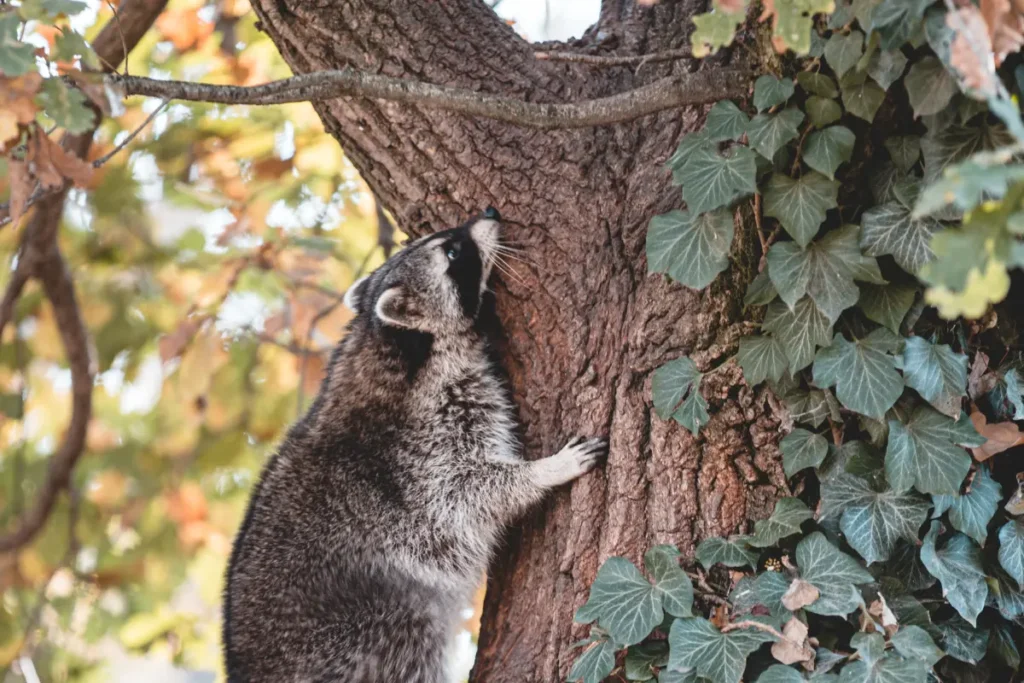
The ample food is the main reason for raccoons moving from wild to developed areas. They are keen and opportunistic eaters. Raccoons will do anything to get access to the food. They will break locks and windows and even chew through the wood and metal structures.
Typically, raccoons invade homes by climbing onto the attics or roofs and building the nest inside. Once in the attic, if there is no window or access point, it will create one by chewing through the insulation panel.
A raccoon is likely to make holes in ceilings and the house exterior. They can also chew through the wood cabinets and pantry doors to get the food.
Do Raccoons Climb on Wood?
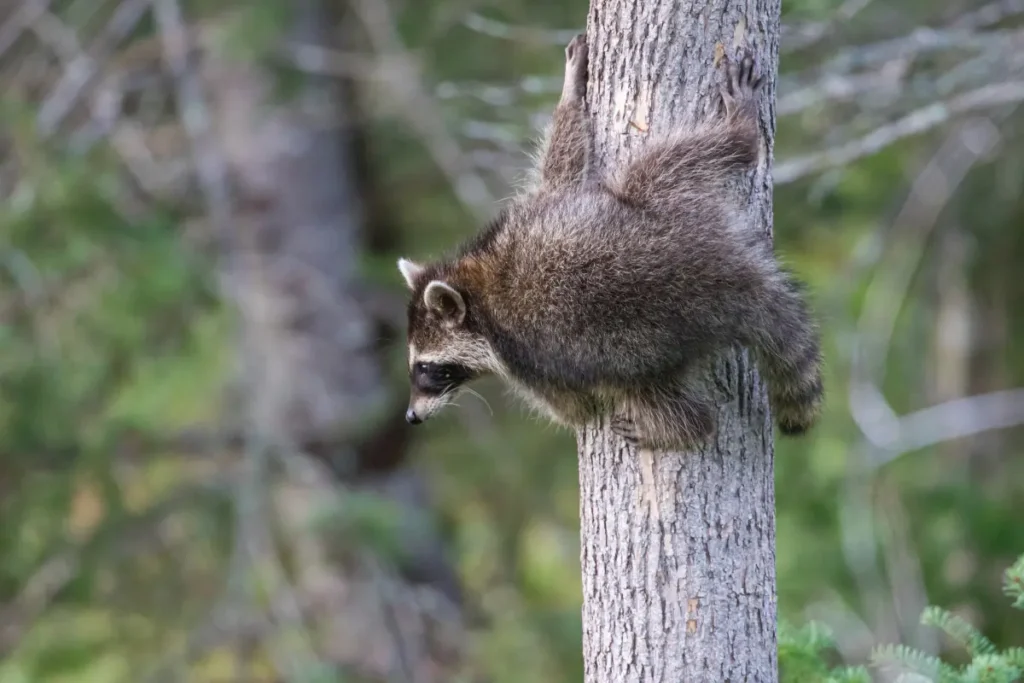
Raccoons have evolved and adapted according to the urban settings. They can climb on trees and the plywood and wooden structures as well. They have sharp five-digit paws that help them grip the surfaces and create friction so they can easily climb onto the smooth wooden structures of homes.
Therefore, it will not be wrong to state that raccoons are good climbers.
Why Do Raccoons Climb on Wood structures?
Trees are the common resting place for raccoons. They can also build a nest inside hollow tree structures. However, in the city or developed areas, a raccoon can climb on almost all types of wood, including plywood which is smooth and is used in building structures.
They climb on wood structures for the same reason as chewing on them, to find food and shelter. It will climb on the house to get to the attic to build a nest. Plus, to live close to the food.
Can Raccoon Damage Wood Structures?
Yes. Raccoons can damage wood structures. They use their physical abilities by digging claws onto the smooth plywood structure of buildings. However, this digging into the building structure to climb homes destroys the exterior of the buildings, causing scratches and tears.
According to the research paper published by the University of Missouri- Colombia, raccoons are the most destructive mammal out of all the wild mammals living in the urban setting.
They will keep on causing more problems, and with evolution, they are losing the fear of humans resulting in more damage.
How To Identify Raccoon Chewing Wood?
There are many animals apart from a raccoon that also chews on wood. It is necessary to carefully look out for the signs to confirm the presence of a raccoon in the house.
If your house exterior is built of plywood, then the high chance is that culprit is a raccoon. The other signs are chew marks or tears in the wood structures near the attic and roof.
Additionally, the paper written by Corey M. Huxoll, Terry A. Messmer, and Mike Conover states that one can identify raccoons’ presence also through handprints that are three to four inches long.
Can Raccoons Eat Wood Wall And Fences?
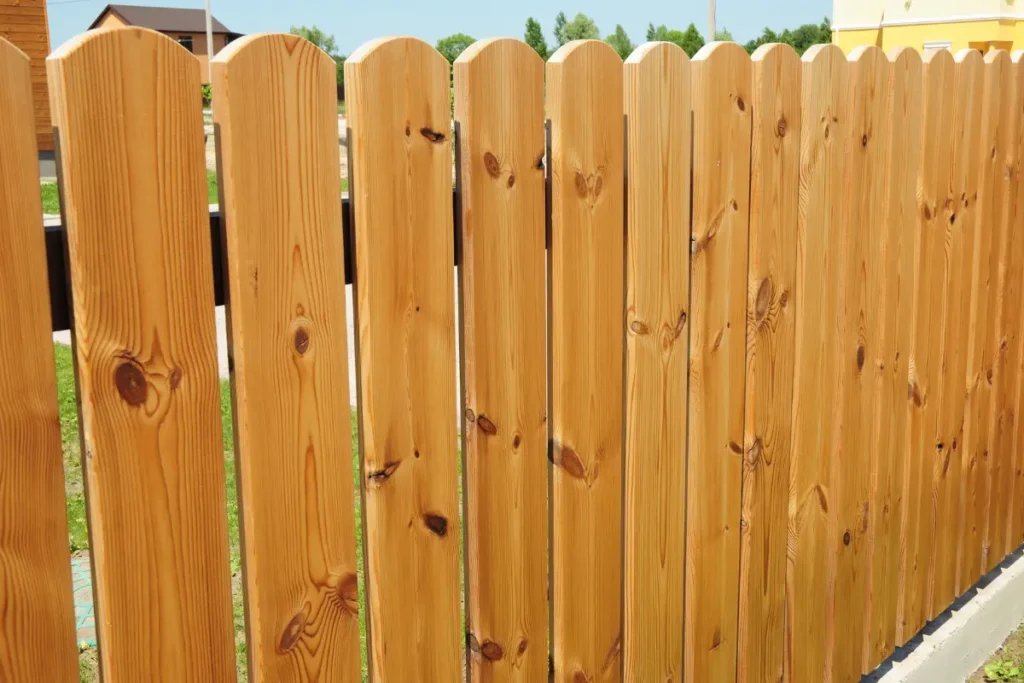
Raccoons can nibble on soft wood like plywood. The plywood is used for making a fence, windows, and other house structures. It is easy for raccoons to chew through the wood fence and walls to get inside the homes.
Therefore, they will select wood instead of metal structures to make entry points.
How Do I Keep Racoons Off My Fence?
You must know that raccoons visit damages your property and is dangerous for house pets. They can break into your house from anywhere by opening locks, breaking windows, or making holes in the roof to get inside.
Chewing through the wooden fence, walls, ceilings, or windows is easy for them. To prevent such issues, follow the tips;
1. Trim The Branches
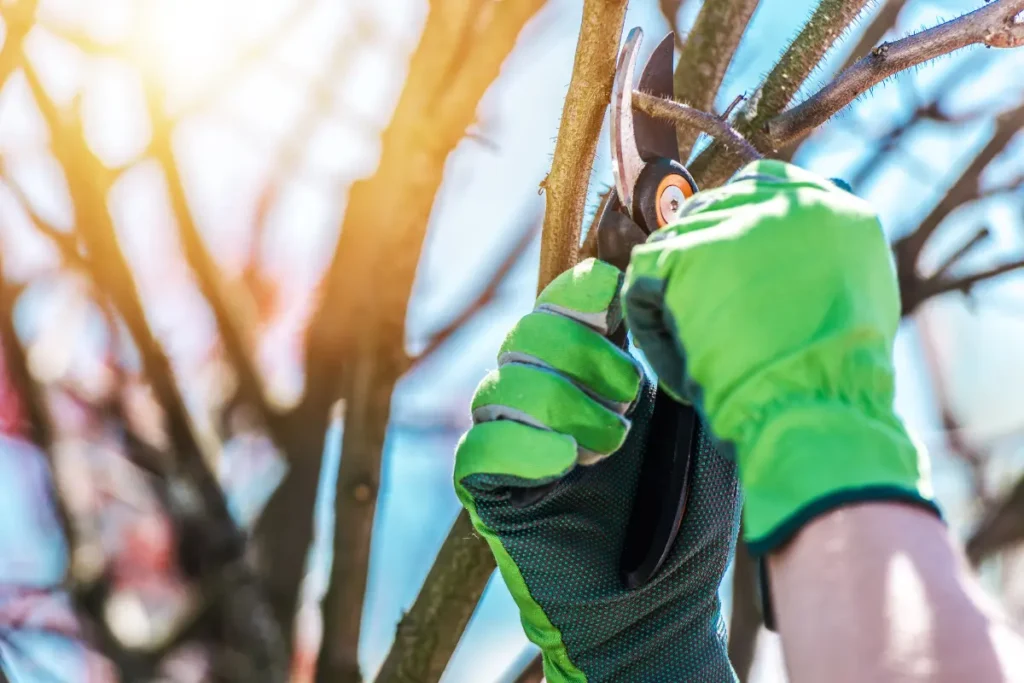
Raccoons climb onto the trees effortlessly. If you have trees very close to your house, get rid of them. If you cannot remove them, at least make sure to trim the branches which lead to your attic, roof, or windows.
Raccoons will climb through these branches into the house, and you have surprise visitors in the attic or chilling on your window sill trying to break in.
You can also install metal collars around trees to prevent raccoons from climbing. But ensure that the collars are at least three feet above the ground.
2. Seal The Gaps And Holes
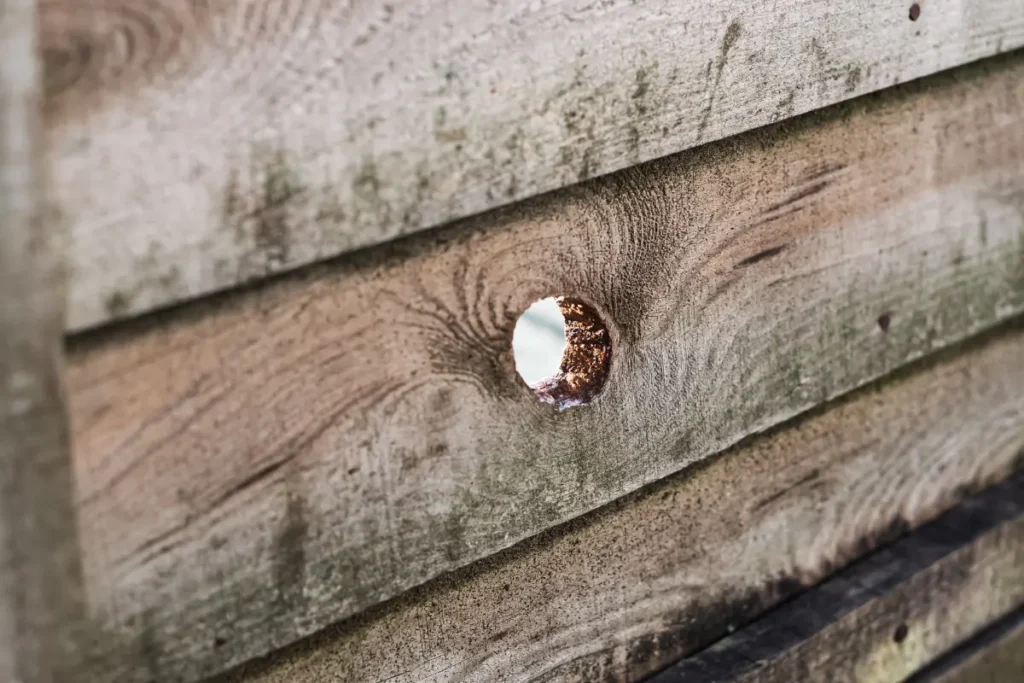
Inspect the fence for holes, gaps, or evidence of deterioration regularly. So you can prevent raccoons from breaking in. Raccoons can squeeze through tiny holes as small as four inches.
It is better to install a metal fence instead of wood when you have a raccoon problem in your area. The soft wood is easy for them to chew through and enter.
3. Eliminate Food Sources
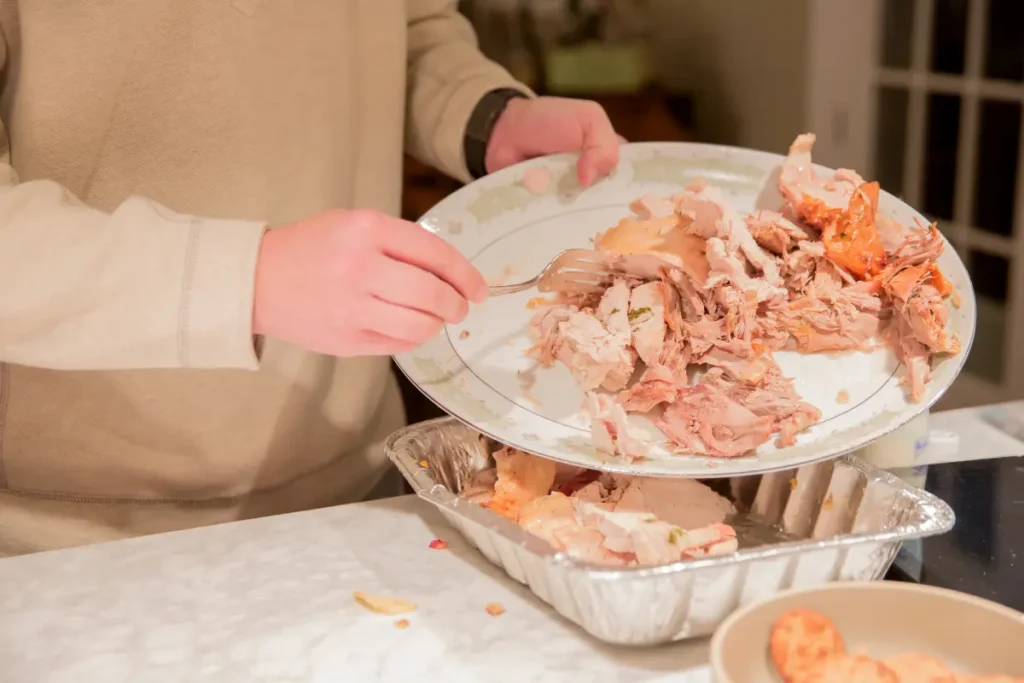
Raccoons are attracted to food sources. Therefore, it is essential to remove food sources to prevent them from getting inside the house. Remember, raccoons have sensitive olfactory receptors and can smell food from miles away.
Use heavy metal dustbins with a lid so that the smell of leftover food items does not attract the wild mammal. Plus, make sure to throw the food waste in sealed plastic bags.
If you own pet animals, never leave their food out in open sheds or the yard because raccoons also eat pet food. Always store the pet food in large containers inside closed spaces.
4. Install Electrical Fence or Wires
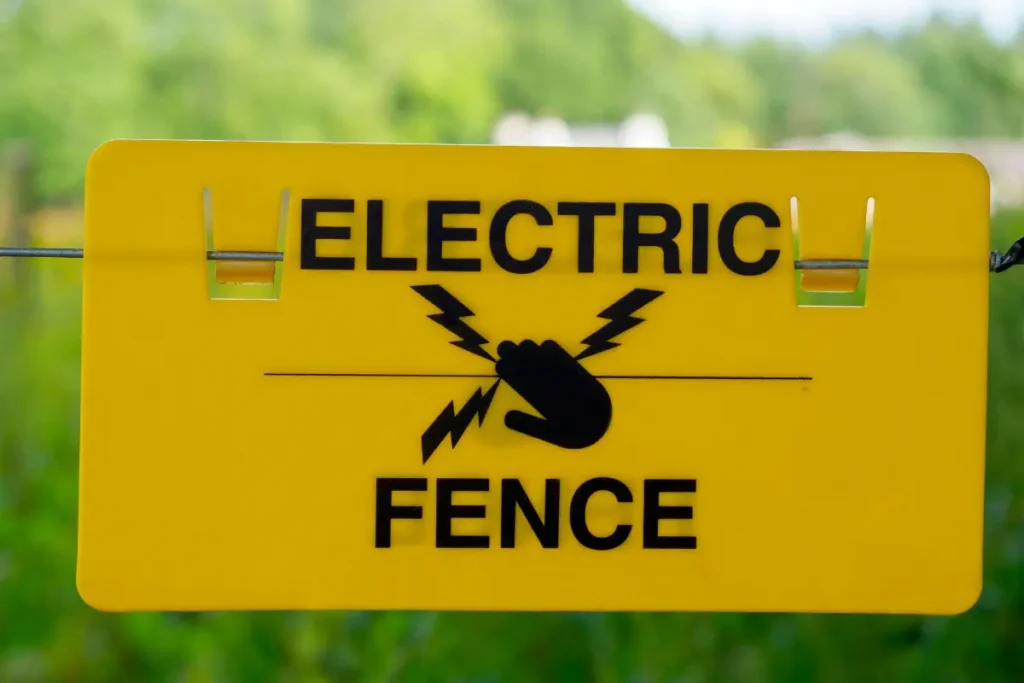
Electrical fencing is highly effective in getting rid of raccoons’ invasion. The two electrical fence wires are installed six inches apart on the perimeter of your property. You can also install an electrical fence on the roof of the buildings to keep raccoons away.
However, activate this electrical fence only at night to prevent accidents. Plus, ensure the safety of the children and pets in your house and of the neighbors.
Conclusion
Raccoons do not eat the wood. They chew through it to make access to get inside the homes. The wild mammal is attracted to the house because of food and shelter. They will do anything to get access to them.
The buildings with Plywood structures are unchallenging for raccoons to climb on as they have sharp claws. It keeps their grip strength to climb into the roof or attics. To prevent raccoons from damaging your property, you need to take the measures discussed in detail above.
References
